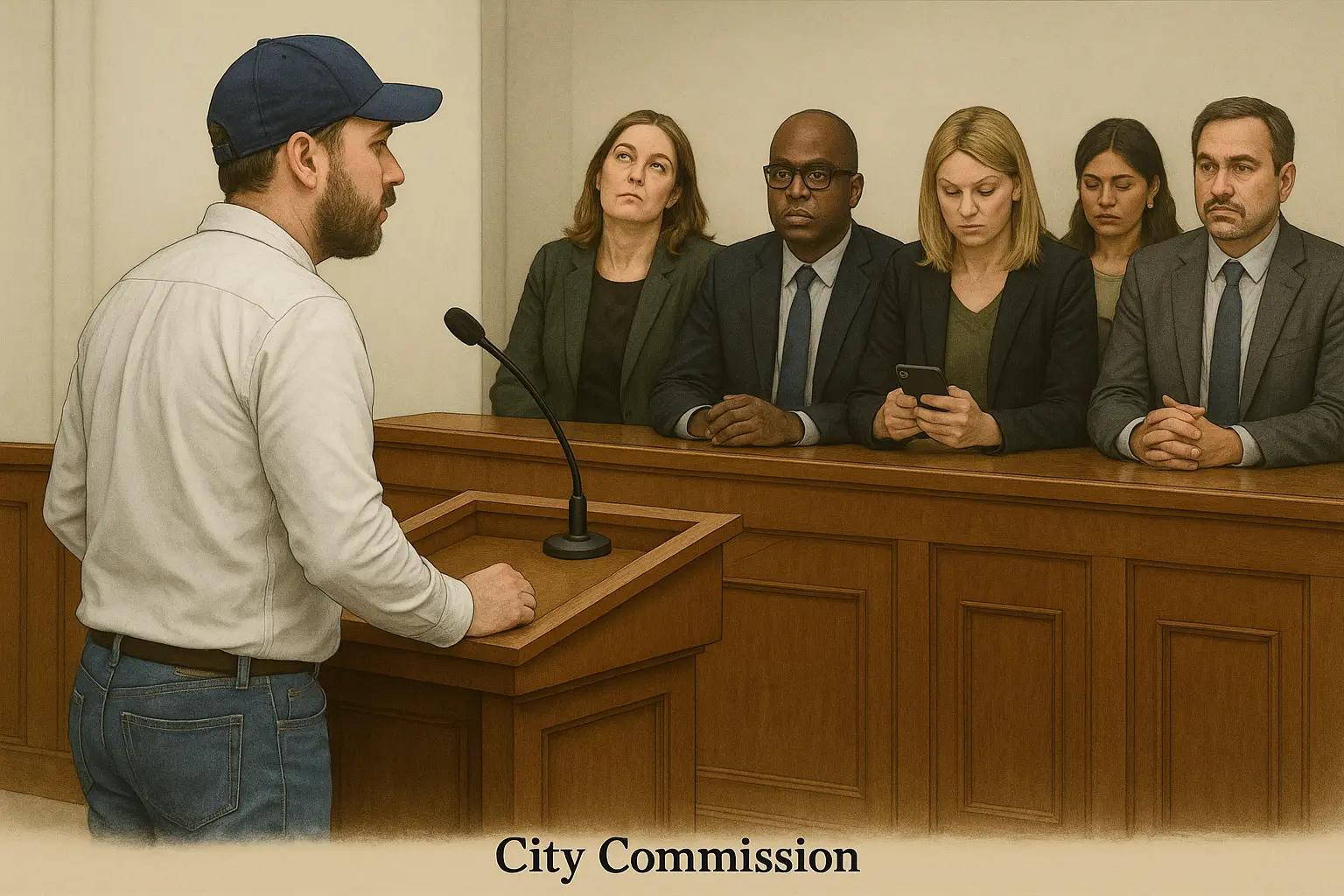Most Painful Public Hearing Lessons (So You Don’t Have to Learn Them the Hard Way)
Ah public hearings.
The crucible where planning theory meets the cold, wet, slap of reality.
And reality doesn’t always show up in business casual.
It doesn’t matter if you’re a planner, a developer, or just someone who wandered into a zoning meeting thinking it’d be quick (HA! it won’t be).
There are certain moments that make you wish you could hit rewind…or maybe not even press play to begin with.
These are the lessons we often learn the hard way. Through confusion, tension, or that one person who refuses to yield the mic.
What’s that?
There’s a three-minute rule on this thing? Good luck with that.
Here are a few of the most painful public hearing lessons, so you don’t have to learn them firsthand.
1. People aren’t just mad about this project, they’re mad about the last five.
It might seem like you’re there to discuss a simple variance or comp plan amendment…but little do you know, a full history lesson is coming your way.
Often, what surfaces isn't just feedback on the item in question, rather it’s a backlog of frustration from years of decisions (or perceived neglect).
You may be there to represent this case, but congratulations: your face is now the bullseye for every past grievance. The sidewalk that was never built in 2009? You. The neighborhood street that floods every summer? You. That multifamily project next to single-family homes? Also you.
Lesson: Always acknowledge the broader context. People aren’t just reacting to the item, they’re reacting to the process, the patterns, and the history that led up to it.
2. Clarity is everything. If you leave room for confusion, you will lose the room.
A poorly written staff report, or vague recommendation can derail an entire hearing. People will fill in the blanks with fear, frustration, or flat-out wrong assumptions. And once the room turns, it’s hard to bring it back.
Lesson: Be ridiculously clear. Use maps. Use plain language. Repeat key points. If you can’t explain it without using acronyms, you’re not ready.
3. Don’t underestimate the power of that neighbor.
There’s always one. That one neighbor who shows up with a binder, a handout, and a list of grievances that predates the current zoning code. May even predate you. They know the parcel history, the soil conditions, and your department's org chart better than you do. And if you're not prepared, they will own the room.
Lesson: Do your homework (let me say that again…do your homework). Know the history, anticipate the concerns, and be ready to speak calmly and confidently. Respect the passion, even if it's misdirected.
4. The applicant might be their own worst enemy.
You’ve crafted a solid staff report. You’ve addressed key concerns. Then the applicant steps up and casually mentions their plan to “maybe turn it into a short-term rental down the road” or how they “assumed this would be a rubber stamp.”
Cue the pitchforks.
Lesson: If you're a planner, coach your applicants before the meeting. Set expectations. Remind them that public perception matters and every word counts. A few unscripted comments can shift the tone of a hearing fast, and not in a good way.
5. What’s legal isn’t always what feels fair.
You can follow the code to the letter and still face opposition. People care about how a project feels, how it fits (or doesn’t) with the character of their neighborhood, their sense of place, or their daily lives. The fact that a project is consistent with the Comprehensive Plan and follows all the requirements of the Land Development Code, doesn’t always win the room.
Lesson: Bridge the gap between legal and lived experience. If you can’t fix it with policy, acknowledge it with empathy.
6. Sometimes, silence means confusion, not agreement.
You present your report, the room is quiet, and you think, Wow, no one’s objecting. Until the vote…when things go sideways.
Lesson: Do not assume people understand, rather make sure that they do. Ask questions. Pause. Invite comments. Silence can be dangerous if it’s hiding misunderstanding.
7. Body language is part of the hearing.
The eye rolls. The crossed arms. The side-eye between board members.
And my personal pet peeve: the phones. What could possibly be so urgent that you need to check your phone in the middle of a public hearing?
People are watching and they read more into nonverbal cues than we realize. A smirk can feel like disrespect. A sigh can feel like dismissal. And a phone? It can make someone feel like they don’t even matter.
Standing at the podium is nerve-wracking enough. You’re trying to explain your situation to a panel of decision-makers, and the moment they start checking out, visibly or mentally, the message is clear: this isn’t important.
It’s a quick way to make someone feel small. Like their voice doesn’t matter. Like the decision was already made before they walked up.
Lesson: Stay present. Be aware of your posture, tone, and reactions even when it’s been a long night. Respect is part of the process.
And please… no phones.
Final Thoughts
Public hearings are part policy, part performance, and part therapy session. They can be intense, unpredictable, and sometimes down right painful, but they’re also where the public gets to be heard, and where planners get to do their most human work.
The goal isn’t to avoid conflict, it’s to show up prepared, with clarity, humility, and a little bit of patience.
Because as messy as they are, public hearings are where the work gets real.
%20(1200%20x%20237%20px)%20(300%20x%2059%20px).webp)


.webp)


